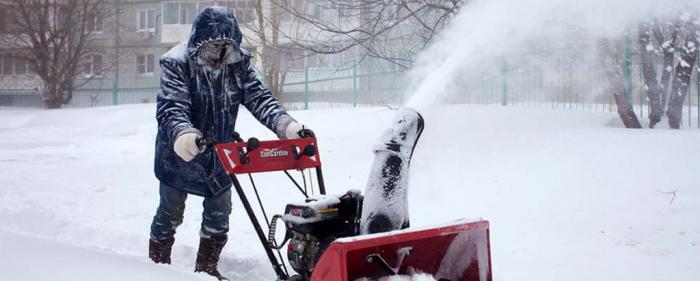
snow remove
In winter, the streets and roofs look like a snowy wonderland! But for people who clear snow from roads and pathways, it’s a hard work. One popular method to melt the snow and ice is by using salt. However, understanding its effects on making a sustainable approach is vital. In this article, we will learn the role of salt in snow removal and explore some key alternatives.
The Role of Salt in Snow removal
Melting Ice and Snow: A Superhero Named Salt
In winter, during the snowy season, we use salt to melt the ice and snow on pathways. Salt is like a superhero that helps to clear the snow quickly. It works by making the ice melt faster, so we can walk safely. It also helps shovels and plows to clear the snow more easily.
Ø Challenge of Icy Surfaces
At the point when ice and snow create unsafe circumstances, the prompt need to clear these surfaces emerges. Strolling or driving on ice can be deceptive and present dangers of slipping and mishaps. This is where the enchantment of salt becomes possibly the most important factor.
Ø Quick Activity of Salt
Have you imagine sprinkling salt on a thick layer of ice? The salt rapidly will work, starting the liquefying system. In this system of snow removal, salt prevents us from slips and falls. It works simply by getting free from walkways and streets by digging tools and furrows
Improved Traction: Better Hold
During the winter, walkways get shrouded in a slushy blend of snow and ice. Walking can prove to be very deceptive. Fortunately, salt acts as a hero by improving foothold. At the point when salt is spread on frigid surfaces, it breaks down and forms a fluid saline solution. This brackish water helps soften the ice and make a slushy blend. This process gives better hold to strolling or driving. Like having a trusted companion to prevent slips and falls. Making streets and walkways more secure for everybody. So, when salt is used to treat these surfaces, it allows us to walk more safely on the landscapes.
Cost-Effective: Save Money
Imagine a town or city covered in snow where the winter weather poses challenges for transportation and safety. In such situations, salt plays the role of a cost- effective hero. Salt is a widely accessible and affordable solution. That many municipalities and property owners rely on to combat the winter weather. It is a reliable and affordable tool in our winter toolkit. Which helps keep streets clear without costing a fortune? Thus, salt is the most practical and budget-friendly strategy for snow removal.
The Impact of Salt on the Environment
Salt, commonly used for snow removal, can have negative effects on the environment. Let's explore some of the ways it impacts our surroundings:
Ø Water Contamination:
When snow liquefies, the salt utilized for expulsion breaks down into the water. It then gets conveyed into streams, lakes, and groundwater. This expands the saltiness of water bodies. That hurts amphibian environments and the organic entities living in them. The balance of life in these conditions can be disturbed, affecting the environment.
Ø Soil Debasement:
Over-the-top salt from snow expulsion can likewise hurt soil quality. High salt levels can prompt soil debasement, lessening its richness and blocking the development of plants. This is particularly unsettling for plants developing close to streets and in metropolitan regions, where the salt focus is frequently higher and can cause issues for the vegetation.
Ø Consumption and Framework Harm:
Salt speeds up the erosion of metal surfaces, which can harm vehicles, spans, and other foundation. This stances dangers as well as increments upkeep costs for the two legislatures and people. The primary honesty of these indispensable parts can be compromised, requiring exorbitant fixes or substitutions. It's vital to consider these natural effects while involving salt for snow expulsion and to investigate elective strategies that are less unsafe to our environmental factors. By being aware of the outcomes of salt utilization, we can pursue a more practical and eco-accommodating way to deal with winter support.
Alternative Methods to Traditional Salt:
Ø Calcium Magnesium Acetate:
One such arrangement is Calcium Magnesium Acetate, which is a harmless choice for the ecosystem produced using dolomitic limestone and acidic corrosives, the two of which are normal substances. CMA is powerful in forestalling ice development and is less unsafe for the climate compared with conventional salt.
Ø Sand
Sand is another non-poisonous elective that improves foothold on cold surfaces. While sand doesn't liquefy snow or ice, it provides a straightforward and eco-accommodating arrangement. In many cases, it is utilized in combination with other de-icing strategies to work on by its large viability.
Ø Beet Juice and Cheese Brine:
Creative arrangements like utilizing beet squeeze or cheddar salt water as de-icers have been investigated in certain districts. When blended in with customary stone salt, these substances can improve execution while decreasing the general amount of salt required. Moreover, they lessen the effect on the climate.
Ø Heat Pavement Systems:
Warmed asphalt frameworks are additionally being carried out in certain areas to forestall snow and ice amassing. These frameworks utilize electric or hydronic warming to keep surfaces warm and dissolve precipitation, diminishing the requirement for de-icing specialists by and large.
By investigating and carrying out these elective arrangements, it is feasible to diminish the adverse consequences of customary salt utilization, further develop security, and lower support costs, all while being all the more naturally cognizant
Closing Thought:
Salt has been use from here onward for quite a while for snow removal, yet it can hurt the climate. Utilizing eco- friendly choices like CMA, sand, or creative arrangements, for example, beet juice and cheese brine water, can assist with finding some kind of balance between winter safety and environmental care. As we navigate the challenges of winter, let's aim for solutions that make our communities safe while keeping the beauty of the snowy season for generations to come.